Tempelhof
The mother of all ‘abandoned’ airports
The Guardian asked me in 2015 to write about Tempelhof for its Cities site focused on urban development. What follows is an extended version updated for 2023 with politicians’ latest attempts to build on the site, and lots of additional historical detail, along with a gansey-load of photos. Tempelhof was never really abandoned – it has always been under someone’s watchful eye – but the story of a discarded airport nevertheless merits inclusion here. I didn’t bother with the usual guide-points on how to find it, get in, etc. Any Berliner can tell you where it is.
It’s never easy to ask someone to give back a cherished gift. In 2014, politicians asked Berliners to do just that with Tempelhof, the former airport turned much-loved communal area.
Famous as the lifeline for West Berlin during the Cold War, Tempelhof’s airfield had become the city’s biggest park. Once it was turned over to the public in May 2010, the site became immensely popular with families, joggers, rollerbladers, kite-flyers, wind-karters, urban gardeners, yoga enthusiasts, hipsters and layabouts; smoke rises in summer from the abundance of barbecues.
But there was always a niggling suspicion that the fun couldn’t last – that Tempelhof’s status as a valuable piece of land essentially given over to the average picnicking Berliner was too good to be true.
“No other city would treat itself to such a crown jewel,” said Ingo Gräning of Tempelhof Projekt, the state company running the site, as he surveyed the runways and frostbitten green from the terminal roof. “There’s 300 hectares there. Monaco is 200.”
There are 303 hectares to be precise, 386 including the buildings.
Tempelhof Airport closed in October 2008 despite a majority voting in a referendum to keep it open. Too few voted for the result to be binding. The airplanes were reluctant to leave – the last three managed to drag out their departure by another month.
The buildings, however, have mostly remained in some form of use. The prominent 72-meter radar tower is still used by the German army to monitor flight traffic in and out of the capital. Most Berliners don’t realize they’re picnicking and boozing beside a military facility.
The remarkable Nazi-era terminal, 300,000 square meters including hangars that curve out 1.23km under a column-free cantilevered roof – said to be the biggest protected building in the world – is mostly leased out.
The Polizei are the biggest tenants, occupying some 46,000 square meters, around 15 per cent of the total. They’ve been renting since 1951, when the US military, which took over the airport after World War II, began leasing out parts of the building.
The police got comfortable, staking their claim even as the Americans left in 1993. “Wir bleiben Alle!” they said. There were demos across the city demanding the Polizei’s right to stay, solidarity parties, bonfires, Sterni, joints, sex with strangers, till the new tenants (the Berlin airport authority) bowed to pressure and let the police stay. Hurrah! (This part didn’t really happen.)
Besides the police, there’s Berlin’s traffic control authority, the central lost property office, a kindergarten, a dancing school and one of the city’s oldest revue theaters – just some of more than 100 businesses and institutions that call the former airport home.
City planners wanted more, however. During local elections in 2011, plans were mooted for new commercial areas and offices, 4,700 homes and a large public library, the latter a pet project of former Berlin mayor Klaus Wowereit.
Planners said construction would take about 25 percent of the site around the edges, leaving 230 hectares free in the middle; politicians promised the new apartments would include affordable housing.
Not everyone was buying it. “This government hasn’t built a single social apartment for 10 years – are they going to start right when park-side real estate opens up?” John Riceburg asked in Exberliner magazine.
“Empty promises, no guarantees,” said the 100% Tempelhofer Feld initiative, which gathered enough signatures to force the city into holding a referendum.
In May 2014, after months of bitter debate and despite a campaign backed by much of the media, 64.3 per cent of eligible voters chose to keep Tempelhof as it is. Foreigners weren’t allowed vote, or the figure would have been much higher.
Politicians were left red-faced and investors empty-handed. “It’s a defeat and it’s a clear one,” said Wowereit, whose campaign was backed by much of the media.
“The wonder is that Berlin still carries on. In the Prussian capital, hippie culture is state policy,” wrote Ulf Poschardt, deputy editor of conservative newspaper Die Welt. Poschardt did his journalistic schooling in Munich.
Despite Bavarian misgivings, the Tempelhof conservation act was written into law, prohibiting construction anywhere on the former airfield and ensuring only limited development. No trees can be planted within a large inner circle, not even to replace dead ones, while park benches face careful scrutiny. Permanent toilets cannot be constructed, nor changing rooms for sports facilities. Nesting birds were already protected and areas are fenced off for insects – 112 spider species, some endangered, and 68 beetle species have been identified at Tempelhof.
“The plan is to develop the park with direct community involvement, but there are restrictions on what can be done. New buildings are out of the question,” Tempelhof Projekt chief Gerhard W. Steindorf said.
He told me no apartments will be built at Tempelhof “as long as the conservation law exists,” and though he respected the referendum result, he lamented a missed opportunity to build cheaply on public land.
“There are other areas available but they’re usually in private hands and not central. The whole Tempelhof site belongs to the city of Berlin. This was the chance for affordable housing,” he said. “Berlin needs housing. Another 250,000 people are expected to move to the city by 2020.”
Distrust was a key factor in shooting down the city’s proposals, particularly regarding affordable housing. Steindorf said public representatives worked hard to keep costs down. A mix of affordable and, well, unaffordable was envisioned, similar to schemes in Munich and Hamburg, with cheaper housing on lower floors crowned by the more expensive variety above.
“Berlin did what it could but the chance wasn’t taken. It quickly spiraled into, ‘We don’t want it.’ It was an emotional decision. But I’m not sure if people wanted Tempelhof to stay exactly the way it is.”
Fast forward to 2023, and beady-eyed local politicians are once again pushing their plans to build on Tempelhof. Another referendum, round two, looks inevitable.
Over at the buildings, tours of the terminal are popular with tourists fascinated by the airport’s Nazi and Cold War history. And a dark past hasn’t dimmed hopes of a bright future.
Tempelhof has already played host to major events, fairs, product launches, fashion shows and concerts.
Seven hangars – the smallest capable of holding 2,000 people, the largest 3,800 – provide ideal venues for extravagant automobile industry unveilings and other presentations. The glitzy Bundespresseball (Federal Press Ball) took place in the 3,500-square meter main hall in 2014. It’s been held at Hotel Adlon ever since, so evidently it didn’t take off at Tempelhof.
“Berlin is a pioneer in re-using buildings that were left over after the division of the city,” Steindorf said, citing techno club Tresor as an example of a successful metamorphosis. “It’s a party city.”
Tempelhof is keen to play its part. It hosted Europe’s first Lollapalooza music festival in September 2015.
“Now that the field’s future is safe we can continue to have more events like that,” said Steindorf, still excited by memories of Die Toten Hosen playing to 50,000 in 2013.
Also safe are the communal gardens. Lovingly tended by green-fingered apartment-dwellers grateful to break free of their four walls, the allotments are often adorned with old couches for gardeners to entertain visitors; others have no gardens but bring their couches anyway. Beer is usually involved.
Despite its half-return to nature, Tempelhof could not be mistaken for anything other than an airport. Runway signs and markings have attained reverence among the revelers; an airplane once used for training by fire services provides a unique perch for resting birds including hawks; and information signs inform visitors about episodes from Tempelhof’s history.
In a way, it’s apt that the field has reverted to recreational use. Long before there was any talk of flying, it was a popular place for Berliners to escape the city and converge with their picnics or play sport.
The field assumed military importance when the Prussian army began using it for maneuvers in 1722 and several barracks were built nearby. However, picnics and sport continued on army days off. The military bought the whole area in 1828 and rented the western part to an equestrian club. Horseracing provided further diversion for Berliners.
Various football clubs were formed at Tempelhof. The first was BFC Frankfurt in 1885. Berliner FC Germania was founded in 1888 and it remains Germany’s oldest active football club, albeit at modest levels. Union 92 Berlin – not to be confused with today’s second division side Union Berlin – won the German championship in 1905.
By then of course flight was very much in vogue. The Prussian army stationed a “balloon detachment” at the western edge of Tempelhof in 1884. These were heady days – the days when flight was only taking off, both physically and metaphorically, when steering and getting hot air balloons to go where you wanted them to go was the main problem.
Experiments and flight attempts captured the public’s attention. Hermann Wölfert unveiled the first steerable winged airship in Berlin in 1882. He was killed in 1897 when his demonstration model exploded over Tempelhof.
In 1905, New York publisher James Gordon Bennett announced a competition for long-distance travel. Three years later, spectators flocked to Tempelhof to see 23 balloons from eight countries float off for the Berlin race. It was won by Swiss crew Theodor Schaeck and Emil Messner, who flew their “Helvetica” balloon 1,190km to Norway. They had no idea where they were going. They were so sure they’d die as they drifted over the North Sea they wrote farewell letters to their families.
Count Ferdinand von Zeppelin flew one of his flying Luft-Züge (air-trains) above Tempelhof for Kaiser Wilhelm II and some 300,000 Berliners on Aug. 29, 1909, and five days later around 150,000 were treated to another aviation sensation when Orville Wright flew his “aeroplane” eight laps around the military installation. The Kaiser didn’t attend that, however – Wright wasn’t German.
World War I secured aviation’s importance. More than a quarter of German military aircraft were produced at nearby Johannisthal, one of Germany’s first airfields, which had opened in September 1909.
A proposal for an airport at Tempelhof was made in 1910, but it wouldn’t be until Oct. 8, 1923 that the makeshift “Flughafen Tempelhofer Feld” began its fledgling operations with scheduled flights to the East Prussian city of Königsberg, now Kaliningrad of Russia, and Munich, still Munich.
By 1930, Tempelhof was handling more passengers than any other in Europe, with planes taking off and landing on grass. Hard runways weren’t introduced until the airlift of 1948-49. We’ll come back to the airlift later.
Clarence D. Chamberlin and Charles Levine landed their “Columbia” plane somewhat short of Tempelhof after flying a record 3,911 miles from New York in 1927. They ran out of fuel. After refilling, they finally touched down at Tempelhof on June 7 having survived another emergency landing in between. Charles Lindbergh had already scooped the record for flying solo across the Atlantic.
Irishman James Fitzmaurice and two Germans, Hermann Köhl and Ehrenfried Freiherr von Hünefeld, were the first to go the other way, when they left Ireland and landed in Canada, falling short of original destination New York. But what the hell, they crossed the Atlantic.
German airline Luft Hansa A.G. grew out of Tempelhof through various mergers in the 1920s. It took off in more ways than one with 64 routes by 1926, when it even flew to Peking and a flying boat reached South America. Things were about to change, however. In May 1933 one Hermann Göring took over the aviation industry as Reichsminister. Lufthansa planes had swastikas on their tails until 1945.
The Nazis’ ascent to power in 1933 coincided with Tempelhof’s need for an upgrade. The old airport, constructed in various stages between 1923 and 1929, was already over capacity. It had been the first in the world to have its own underground railway.
Before the Nazis got going on the airport they had to deal with political opponents. In 1933, Göring formed the Gestapo, which revived Tempelhof’s Columbia-Haus prison, closed in the 1920s due to poor sanitation. It quickly filled up with prisoners that were abused and tortured, some murdered. The Gestapo prison became known for vicious cruelty and unspeakable conditions.
A year later it became the Columbia concentration camp. It housed journalists, politicians, prominent Jews, communists, lawmakers, homosexuals and any other “undesirables” the SS could find. GDR leader Erich Honecker was just one of around 10,000 prisoners to pass through Columbia-Haus before it was closed in 1936 to make way for the new airport terminal. No traces remain after its 1938 demolition.
Hitler had taken a personal interest in Tempelhof’s expansion and Göring, a busy man, took charge of the project. Architect Ernst Sagebiel was commissioned to design the airport in 1935 and construction began the following year. It was never completed. Berlin has a thing about finishing airports.
What was completed is nevertheless impressive, not least due to the high quality materials used – a reinforced concrete skeleton was clad with a heavy natural stone façade. Window frames still bear red scorch marks from the fire that engulfed the building at the end the war.
A five-meter sculpture of an eagle perched on a globe adorned the terminal roof. This was taken down by the Americans in 1962 to make way for radar equipment. The eagle’s head now frowns impassively outside the terminal building.
Sagebiel introduced many innovative features since copied elsewhere – separate levels for passengers and luggage, for example. The terminal roof covers the area in front of the terminal, so planes could ferry passengers right in. Everything was done for passenger comfort.
“Sagebiel designed it so it was only 220 meters from the last step outside the terminal door to the plane on the other side,” Gräning told me.
The roofing ceremony took place in 1937 but construction stalled with the outbreak of war. Stair towers to the roof were never built. These were to provide access to grandstands demanded by Hitler so over 80,000 people could watch Luftwaffe air shows. A planned waterfall, large-scale offices and a control tower were also never realized.
During the war, forced labor was used to make arms and combat aircraft, particularly the Ju 87 “Stuka” dive bombers, in the hangars and in railway tunnels under the buildings.
By 1944 there were over 2,000 foreigners from occupied territories working for the Weser Flugzeugbau company. They were housed in a large barracks on the northern edge of the airport.
Lufthansa also made use of forced labor at Tempelhof, for maintenance, mounting radar installations and repairing front-line aircraft. The Nazi war effort would have collapsed by 1942 at the latest without foreign forced labor.
Tempelhof is more fondly remembered today for the Berlin airlift of 1948-49, when the western allies responded to a Soviet blockade of land routes into West Berlin by flying 2.3 million tons of freight into the divided city.
West Berlin was effectively an island in Soviet-controlled East Germany, and its 2.1 million inhabitants were dependent on the Americans, British and French to supply coal, food, machinery and other basic necessities after the half-city was cut off on the night of June 23/24.
American pilots endeared themselves to Berliners by dropping candy for the kids. Gail Halvorsen was the first, known as “Uncle Wiggly Wings” after he told kids he’d wiggle his wings as he approached so they’d know it was him.
The Americans became known as the “candy bombers” for dropping 22 tons of candy via miniature parachutes for sweet-toothed West Berliners. Apparently adults gobbled up as much as the kids.
Tempelhof led the airlift, but there were also flights to Gatow in the British sector, while the French agreed to build Tegel in response to the blockade.
The first aircraft landed there on Nov. 5, 1948, a record 90 days after construction began. Tegel also had Europe’s largest runway at the time.
There were so many flights into Tempelhof that any pilot who couldn’t land had to abort and return fully loaded, usually back to Frankfurt, as there was no time to reschedule landings. On April 6, 1949 alone there were 1,398 flights with 12,940 tons of cargo, a landing every 63 seconds.
Concrete runways had to be built to deal with the stress of constant use. Interlocking metal plates were being used, but the heavy four-engine Douglas C-54 Skymasters ripped them apart.
After nearly 278,000 flights, the blockade was ended at midnight on May 11, 1949. The airlift had claimed 77 lives – 41 English, 31 American and five Berliners.
Civilian flights resumed afterward, with Pan American, Air France and British European Airways operating services. Pan Am flew the first transatlantic flight from New York to Berlin in 1954.
Tempelhof became Germany’s busiest airport, an important departure point for East Germans fleeing the Soviet sector until the Berlin Wall sealed the border in 1961.
International airlines’ use of jet aircraft spelled the beginning of the end. Air France had already begun using Tegel in 1960, and the others were forced to follow suit after a peak 5.5 million passengers passed through Tempelhof in 1971. Traffic to Tempelhof was suspended and transferred to Tegel in 1975. American airline Pan Am was very reluctant to leave, apparently. There was prestige attached to Tempelhof.
Business flights and smaller aircraft were accommodated from 1985 and the American military continued to use Tempelhof, but of course German reunification in 1990 and the end of the Cold War ended their mission. The US air force handed Tempelhof to the Berlin airport authority in 1993. The airport was given protected status two years later, but the death knell came with the decision to have a new super airport at Schönefeld.
Flughafen Berlin Brandenburg Willy Brandt (BER) was supposed to open in October 2011 before it became a running joke and few believed it would ever open at all. It eventually half-opened nearly a decade late, though it remains a running joke.
Tempelhof’s fate was decided 2008 when not enough voted to secure its future as an airport. All the western districts voted to keep it open, the eastern ones didn’t.
“There’s an emotional connection with it due to the blockade,” Gräning said.
Even then it was a political decision – for West Berliners in particular, Tempelhof had come to symbolize freedom on the frontline of the Cold War.
That’s reflected in the park’s name, Tempelhofer Freiheit, or Tempelhof Freedom. Of course, any development would have an impact on that.
Berliners already had their taste of freedom. There was no way they were giving it back.
More grounded airfields
Flugplatz Schönwalde
Germany’s Luftwaffe used Flugplatz Schönwalde for the war. The Soviets took over afterward and left their traces after abandoning the airfield in 1992.
Flugplatz Brand
Flugplatz Brand was strategically important for the Soviet Air Force. Thankfully its battalions of flying fighters remained on ice for the duration of the Cold War.
Flugplatz Oranienburg
Flugplatz Oranienburg served in the summer of 1944 as a test center for the legendary Horten Ho IX, the world’s first “stealth” bomber.
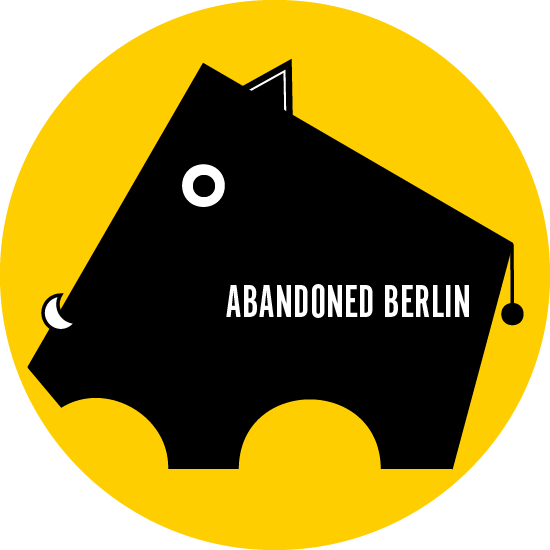

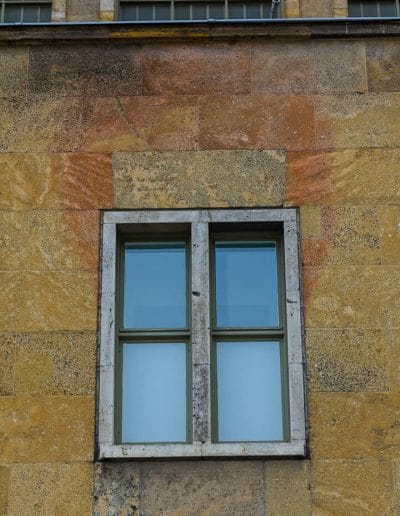
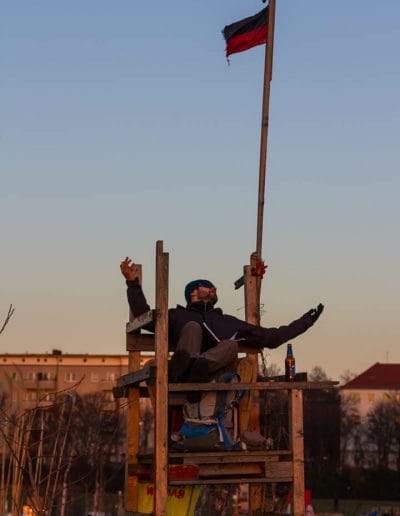
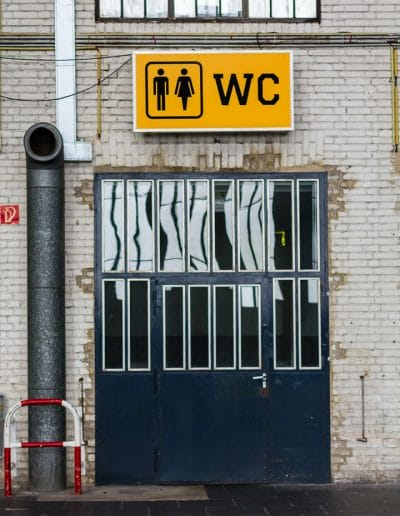
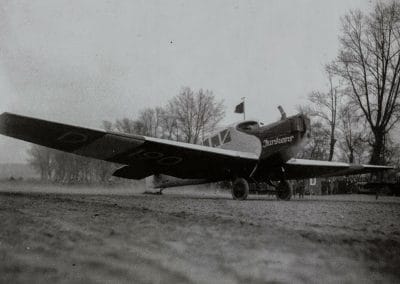
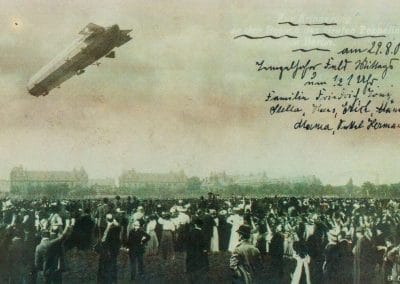
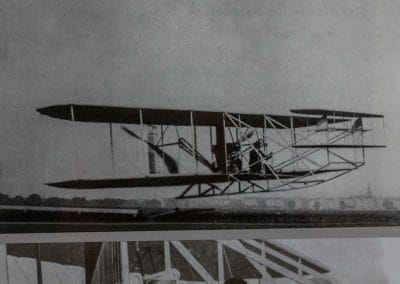


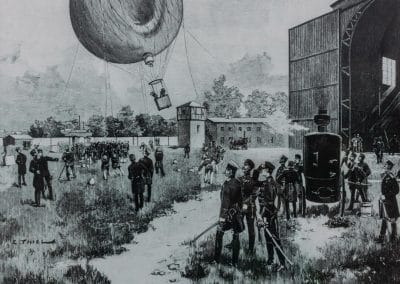
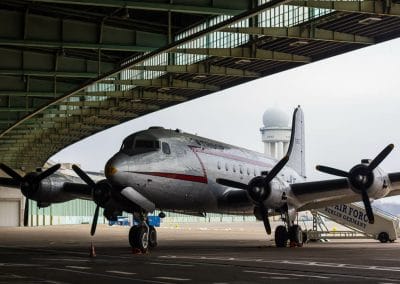
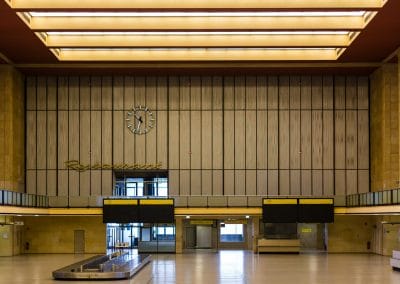
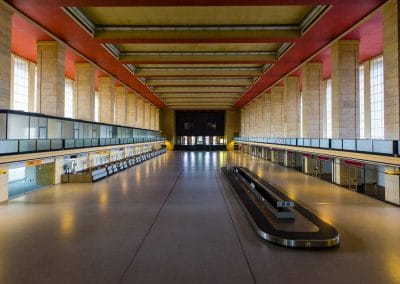



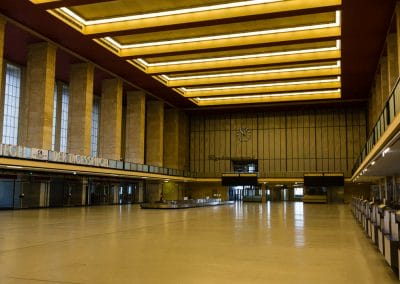
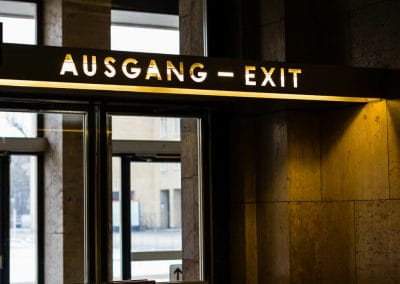
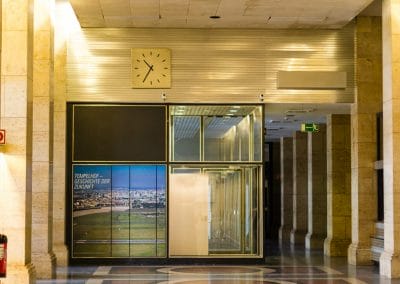
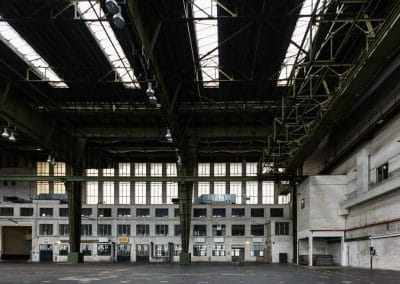
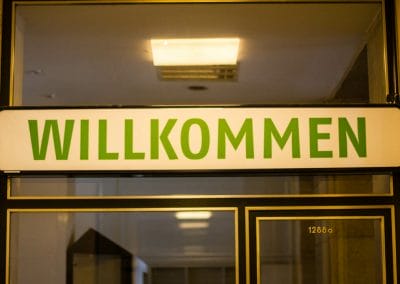
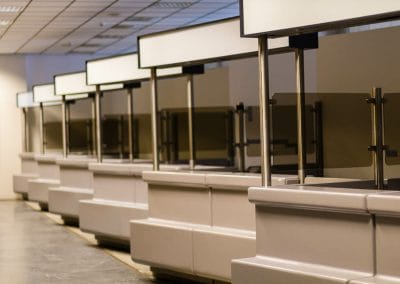

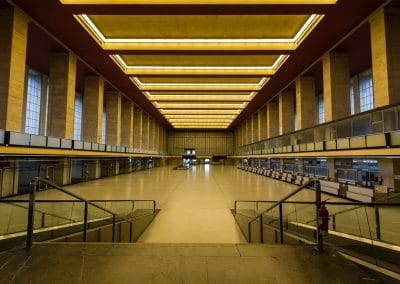
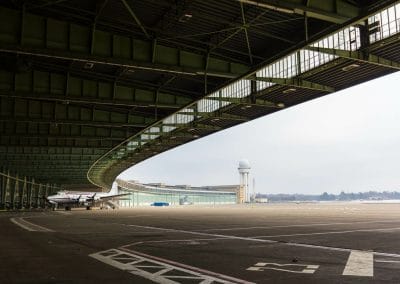

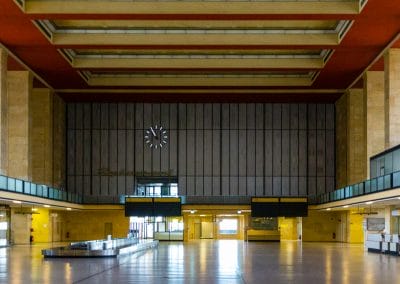
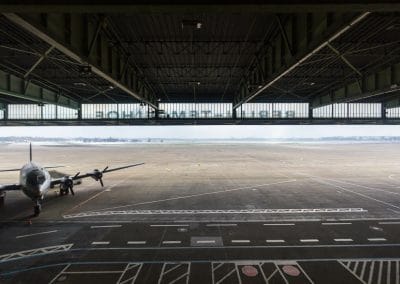

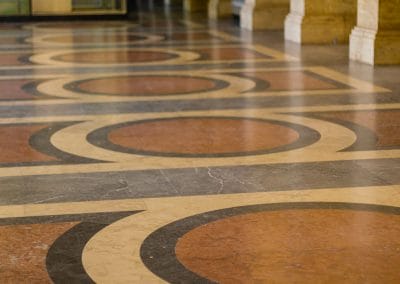

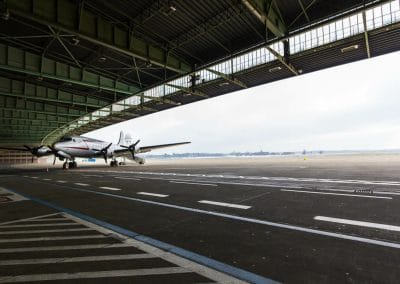
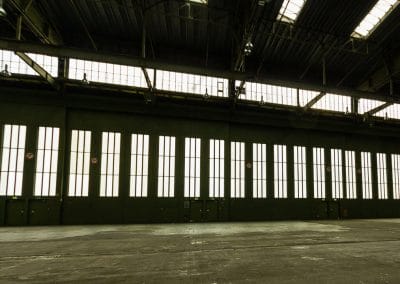
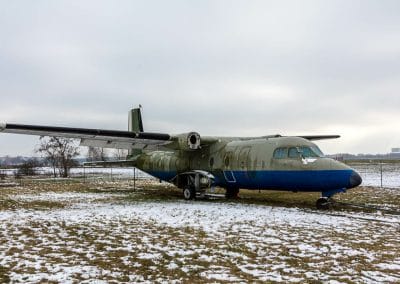

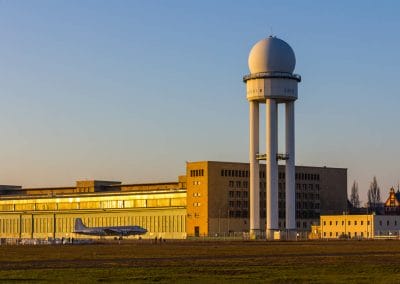




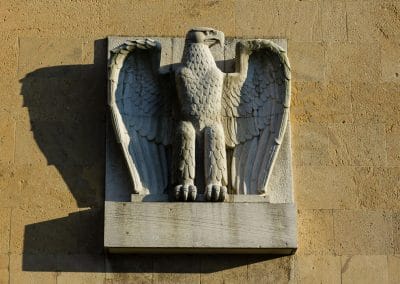
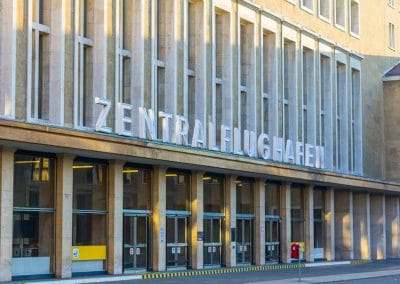
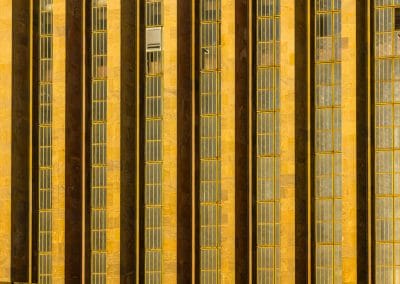
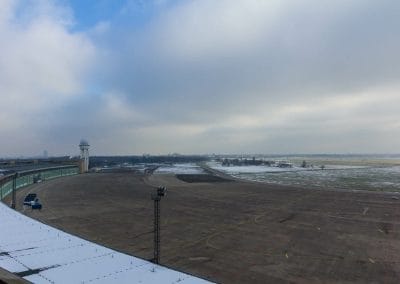


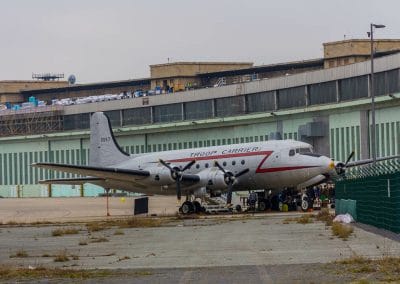


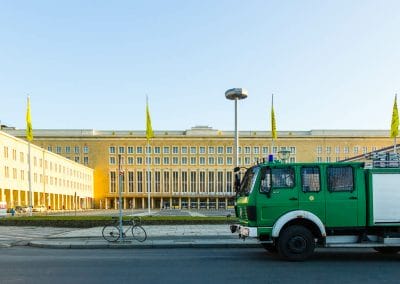

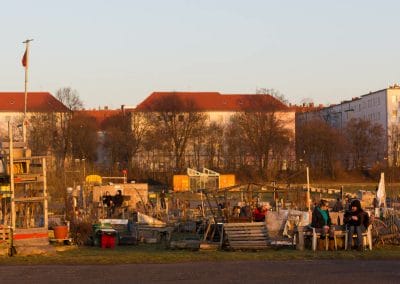

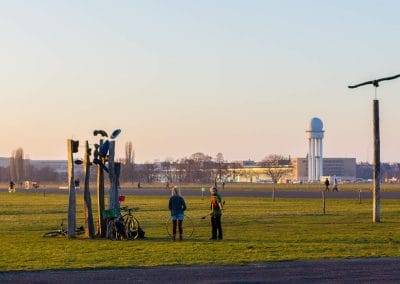
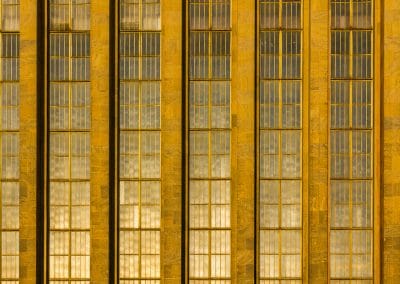
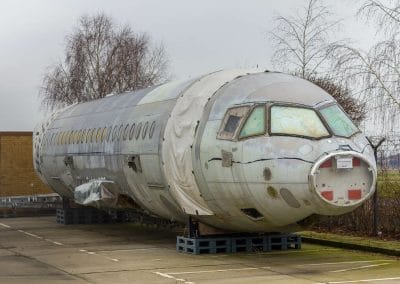
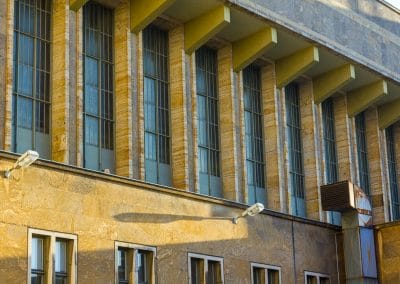

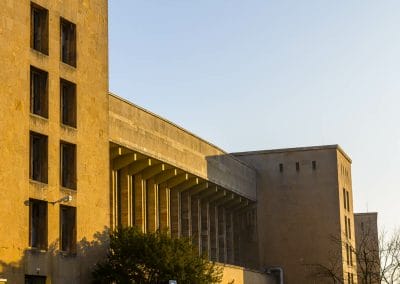



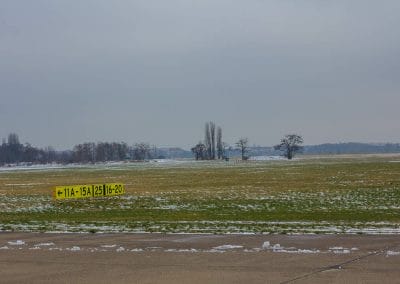


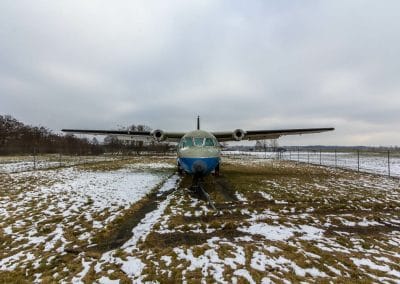

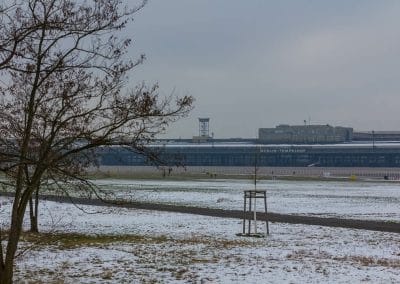



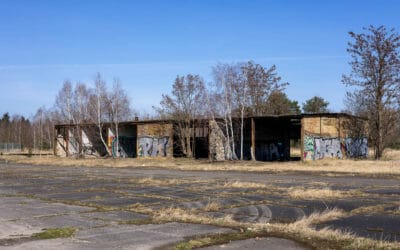
Great post thanks. I have put a link on my own Templehof page.
Great article. I’m not from Berlin but I have lived there – right by the park. It is certainly a very special and well-loved place. I hope the Berliners always keep it safe.
Dearly loved and special place. I only arrived and departed at Tempelhof once but I will never forget it – it is a spiritual place
Wonderful historical account. Thank you so very much Abandoned Berlin. Excellent story and photos as always.
Lovely piece, enjoyed reading. Berlin is one of my favourite places on earth. Phillip Kerr describes many of the buildings in his novels in detail. Very nice to them in pictures too.
Lina
Can you tell me, you visit this legal? Is there any contact or just go to there and ask? Don’t know how to visit this. Hope you can tell me.
Gr, Yoerie
I also would like to visit this airport with my camera – is it possible ?
The grounds are open to the public. There are tours for inside the buildings.
The grounds are open to the public. There are tours for inside the buildings.
I flew into Tempelhof in the mid 80’s on a military flight….interesting place.
Hi. Very well written article. I was in Berlin many times early ’70’s (Raf). Came back in 2013 & April 2015. I had no idea about the old railway lines under the buildings. Do you have any pictures please? Best wishes…love reading your stuff.
Great Article! Thanks!
I was stationed at Berlin Templehof in U S Air Force 1968-1972. I lived on the 6th Floor in Barracks for about a Year/15 months before moving into an apartment in Zehlendorf. I Loved this place and its history. I went back on Millitary leave in 1981 and by coincidence got the same room I had when stationed there! spent 10 days in Berlin the 2nd time. I will never forget Berlin. Love it very much!
Still think about berlin.loved my 4 year there in u s air force
is this building in use at all these days? can i get in for a tour?
[email protected]
walt
I believe there is a daily tour ..12Euro … if you go to the reception there is a desk there … ; []
thanks Sootz Bitz
Walt1948 is my username. I just posted above to Sooty bitz. thanks Sooty
Reminds me of how San Francisco refused to develop much of the Presidio military base- even though that city desperately needs low cost (or mid-cost ) housing.
The looney Left gets together with real estate interests to make sure it didn’t happen. It looks a lot better to bleat on about “Preservation” than admit that new housing will hurt the moneyed elite.
I suspect something similar is happening in Berlin- although I understand land is cheaper there- not being on a peninsula.
Because the greedy right plans to line it’s pockets with bribes from developers under the table for selling off the city’s crown jewels, of course the lefties oppose the righties when they rip off Public Assets as they often do! But the USA right now thinks that wrecking the USA government is their demented birthright!
Thanks! Great pics and interesting story.
I actually had the chance to see the underground part of Templehof in 1987. The endless tunnels with rail tracks and the painted murals were fascinating and all explained in my historical book, “Stained Hands of Spandau”, written from my daily kept diaries while stationed in Berlin during the cold war.
I was fortunate enough to work at TCA 1980-1982 as a civilian secretary to the Director of Operations, LTC William Simon. Having been liked by the German counterparts working there I was privileged to tour the underground’s. Interesting, scary, educational, and forever in my memories as highlights in my life.
From Summer of 1977 to Summer of 1980, I flew in and out of Tempelhof flying USAF C-9A medical planes. The runway was short for jets, but I loved flying throughout Europe. That cantelevered overhang was high enough we could taxi under it, including our T-tail. In the winter, we would use Tegel as it had a Category II ILS, which we would often need in the foggy winter there.
23
Lots if memories bound up with Templehof airport. My father (USAF) worked out of Templehof. We used to go to the bowling alley there (10 or 25 cents a “string”). Going to where the alley was located in the airport, one had to take elevators with no doors that you had to jump in and out of as they passed floors. I once missed the last floor to jump off. Will never forget how scary that was as it got dark. We also used the service family swimming pool at the edge of the field during the summers. Learned how to swim there. Also remember the inside of the cavernous hangers and the cavernous check-in/departure area (last used by my family in ‘72 or ‘74). It was interesting walking unto the tarmac to get unto the airplane. Also remember my class going to welcome Nixon upon his arrival in Berlin. Memories, memories.
I lived in Berlin at Tempelhof Flughafen for 3 years while in the USAF. Love the city, its people, and TCA as we called it. Many great memories!! It would be an atrocity to destroy its ability to serve all the people of Berlin in a way that is NOT commercialized or shut off from the general public. Once you destroy its historical placement there is no going back. Thank you, Berliners, for maintaining the site for future Berliners and people like myself who visits with their families to say, “this was once home”.
Amazing 🤩 article. As an American I have heard stories about the blockage but I never knew the true significance of this noble airport until now. I certainly hope that Berliners continue to preserve this amazing open space. Greed tends to win. I hope in this case the people win!
I lived right across the airport on Tempelhofer Damm in the round building. I was a teenager then.
We loved the airplanes coming and going to bring us food.
Thank you for your service.
TEMPLEHOF. A building like no other. Having been stationed there with the USAF in the late 60’s my bride and I felt like this was
a place to explore the more we read about Tempelhof the more captivating we became this huge work of art. Berlin holds a special place in our hearts we’ve been back to visit and plan to visit again .
Thank you for the article and thank you BERLINERS for preserving this magnificent place that holds so many memories for so many .
It was disappointing to see that the airfield land became “sacred.” In 2008 I spoke by invitation to a neighborhood group that favored closing the air operations and it seemed like the plan to finance operation and maintenance of a huge percentage of the open space by developing one segment of the site made sense. (I was invited to tell about Denver’s closure and redevelopment of Stapleton Airport.)
Yes, real estate developers are not to be trusted, but that’s what active community groups are for.